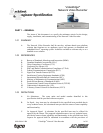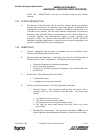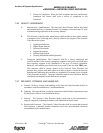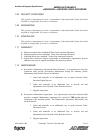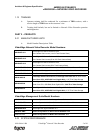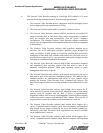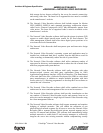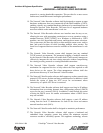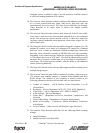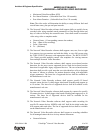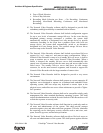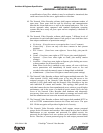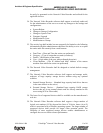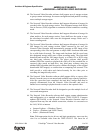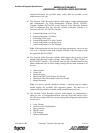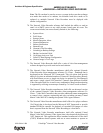
Architect & Engineer Specification
8200-2608-01 B0 VideoEdge
®
Network Video Recorder 9 of 20
AMERICAN DYNAMICS
V
IDEOEDGE
TM
NETWORK VIDEO RECORDER
minimum system overhead in order to provide maximize available resource
to efficiently manage hundreds of IP cameras.
28. The Network Video Recorder software shall provide enhanced performance
as it is more powerful than any single video device, thus more users can
simultaneously access the server. The video devices shall have the Network
Video Recorder as its single client to achieve the highest possible
performance.
29. The Network Video Recorder software shall absorb all of the IP video traffic
as no video is sent across the client network when all devices are configured
on the local and private camera network (LAN2). It shall only impact the
corporate network bandwidth when authorized clients make request for live
and recorded video.
30. The Network Video Recorder software shall be designed to support up to 128
standard IP cameras, or as many as 60 megapixel IP cameras on a standard
dual-core server. It shall, at a minimum, combine multiplexing, alarm/event
detection, video, and audio (currently for MPEG4 with AAC only) recording.
Depending on the camera/encoder, hardware, and storage configurations, up
to 128 cameras per server at 2CIF and 7.5 fps shall be supported by required
hardware that is properly installed and set up according to manufacturer’s
instructions. The system must be scalable, with the ability to add additional
camera licenses dynamically.
31. The Network Video Recorder software shall support parallel recording across
multiple storage targets.
32. The Network Video Recorder shall be capable of recording video from up to
128 cameras onto standard internal or external direct-attached hard drive
RAID storage. The duration of the recording is directly related to the
following parameters which are all selectable on a per camera basis:
a. Number of Cameras – (NVR Camera License Dependent: 1-to-128
Camera Slots)
b. Resolution – (Device Dependent: QCIF, CIF, 2CIF, 4CIF, MegaPixel)
c. Video Codec – (Device Dependent: ACC, MPEG4, MJPEG)
d. Video Settings – (Device Dependent)
e. Frame Rate – (Dependent on Device, Resolution, Compression, and
Network)
f. Hours of Recording – (Dependent on Customer Requirements)
g. Modes of Recording – (Continuous, Motion/Alert-Based, Continuous
with Motion)
h. Level of Motion – (More Activity will Produce Larger File Sizes)
33. The Network Video Recorder shall allow for the following alarm recording
settings:
a. Image Resolution
b. Maximum Video Fetch Rate (FPS)



